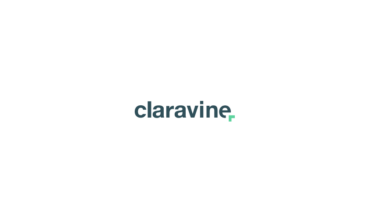How Advertising Agencies Can Prepare for the Post-Pandemic World

The year 2020 has been one of unprecedented uncertainty, chalked full of challenges and obstacles the world has never seen. As we look toward 2021, it’s abundantly clear that the COVID-19 pandemic has ushered in a new normal. People have turned their living rooms into daycares. They’ve transformed their kitchen tables into offices. The list goes on. But the seismic shift doesn’t just apply to the hustle and bustle of everyday life. The pandemic has (and will continue to have) a profound impact on consumers, their behaviors, sentiments, and expectations from brands. Social distancing has accelerated eCommerce into the mainstream. Value-based businesses now have the upper hand. Low and no-touch delivery is the norm. These changes are forcing brands to alter their playbook and operate and interact with the new-age consumer. Advertising agencies working with brands need to be ready and willing to stray from age-old tactics to help their clients survive and thrive in the post-pandemic world. Here are a few ways they can do that:
Brace for More Consumer Data (and Understand How to Use it)
This should go without saying, but agencies will have even more consumer data at their fingertips, forcing them to adjust their systems, processes, and people to keep up. Brands will expect this from them. If an agency can’t keep up, they’ll move on. The influx of data will also bring forth the importance of new data strategies, most notably, utilizing a thoughtful first-party data strategy built around approaches such as user registration, progressive profiling, and event-based tracking.
That said, with more data comes more responsibility. When it comes to consumers’ data, it’s not—and never should be—one-sided. If consumers are willingly giving brands their data, they’re expecting whoever is handling it to do so with care, i.e., use it to create value for them and not the brand. This is where advertising personalization comes into play.
Given that most brands have been over-relying on third-party cookies since the dawn of the internet, this shift will be tough. That said, forward-thinking organizations like Meredith are getting out ahead of the pack. Earlier this year, the media and marketing giant launched Meredith Data Studio, a suite of advertising solutions that leverage the company’s first-party data and predictive insights to help brands’ build more strategic and meaningful marketing, product and business strategies. Data Studio does this by combining an identity graph, a vast data taxonomy, and technology that captures billions of intent signals. Combined, it gives brands the ability to answer questions that have eluded them for years, such as “how they should tailor their messaging to a specific subset of their target audience” and “who’s the right target audience for a particular product?”
As the impact of using a first-party data strategy combined with rich data taxonomies becomes more and more apparent, there’s no doubt that brands immediately jump at the opportunity to deliver more personalized advertising experiences. In turn, forward-thinking agencies must prepare now to ensure they’re ready to implement similar strategies as the demand heats up.
Be Ready and Willing to Think Outside the Box
There’s no getting around it: The pandemic has ushered in much change. The changes that are here to stay will again force brands and agencies’ hands. Take online shopping, for example. While many likely assumed the online world was the preferred destination for all things commerce, the reality is that it wasn’t. Sure, the internet played an immense role in the vast majority of consumers’ shopping journeys, but up until the present, the majority of sales took place in brick-and-mortar stores. Heck, even Amazon’s Jeff Bezos said Amazon is still small in comparison to brick-and-mortar stores.
Now, don’t expect that number to drop dramatically overnight. However, it’s a certainty that that number will continue to decline over time now that eCommerce has “officially” gone mainstream. In fact, according to new data from IBM’s U.S. Retail Index, the pandemic has accelerated the shift away from physical stores to digital shopping by roughly five years. That’s unprecedented. As a result, more brands will be asking their agency of record to double down on digital. That’s great, but it’s going to mean more brands vying for the same consumers’ attention. For forward-thinking agencies looking to get their clients ahead, they have to be willing and ready to look outside the box and take calculated risks when appropriate.
One of those ways could be using Retail Media (sometimes referred to as co-op advertising). From a high level, Retail Media gives brands the ability to serve ads on a retailer’s owned-and-operated website powered by their first-party data. The potential of retail media is why some of the world’s biggest retailers, including Walmart and Target, are investing here, which is certainly indicative of its potential staying power.
That said, the changes agencies make don’t all have to be colossal. Looking toward the latest and greatest in augmented and virtual reality advertising could provide an exciting way to grab consumers’ attention. Conversational marketing could be a worthy investment, too. It’s not about flipping script and picking up a new playbook. For agencies in 2021 and beyond, it’s about adding to their existing one with applicable strategies and tactics that make sense in today’s world.
_____
This point of this article isn’t to scare agencies into thinking that everything they know about advertising is wrong and that tried-and-true tactics will no longer work. Many still will. Instagram can still be a great way to reach Millennials. Ads on Youtube can still drive sales. The point is that the world is changing, and so are consumers. As a result, brands have to evolve with them. For agencies working with these brands, it’s their responsibility to present them with the most impactful strategy—one that’s capable of reaching the modern consumer. Retail Media, ad personalization, and first-party data strategies are just a few of the ways they can do that.


